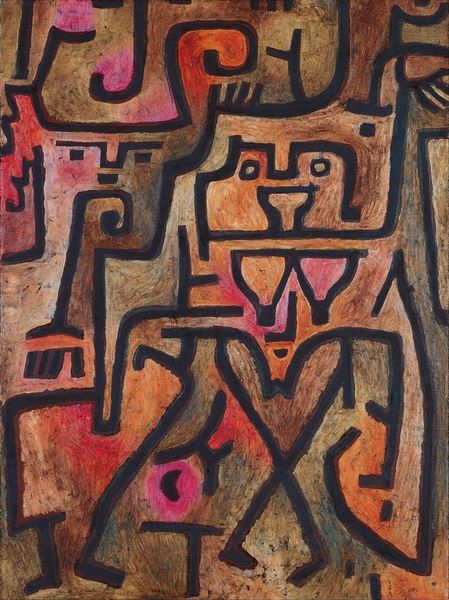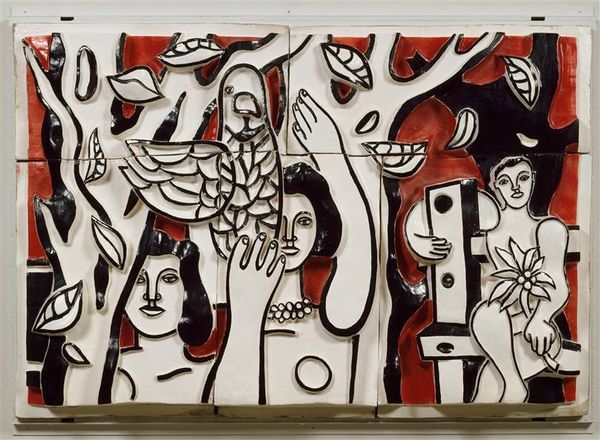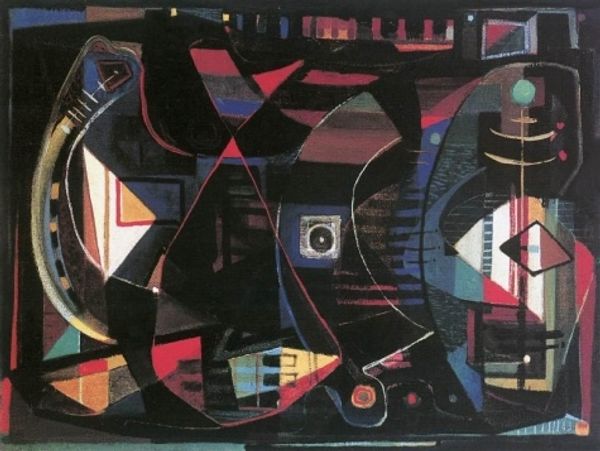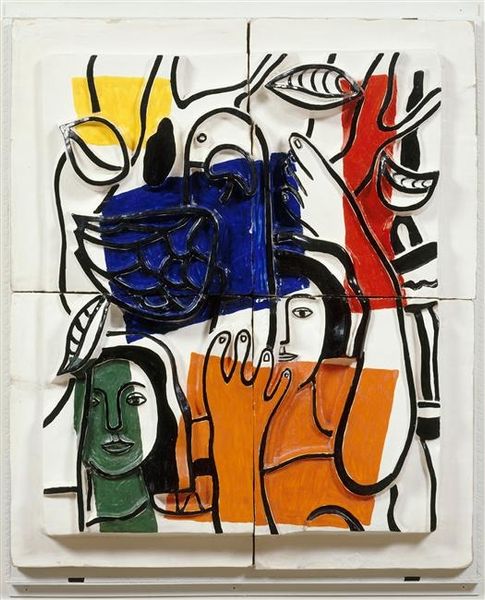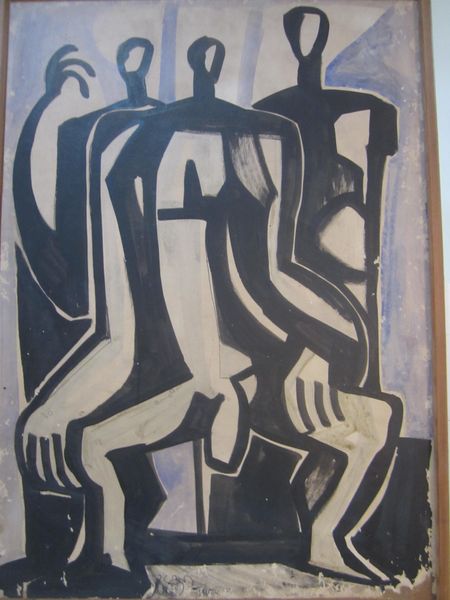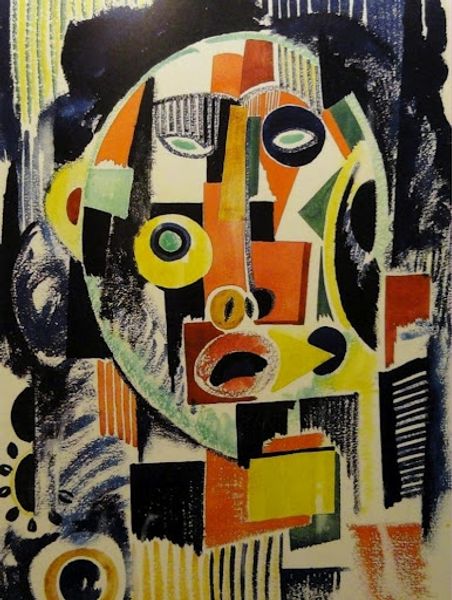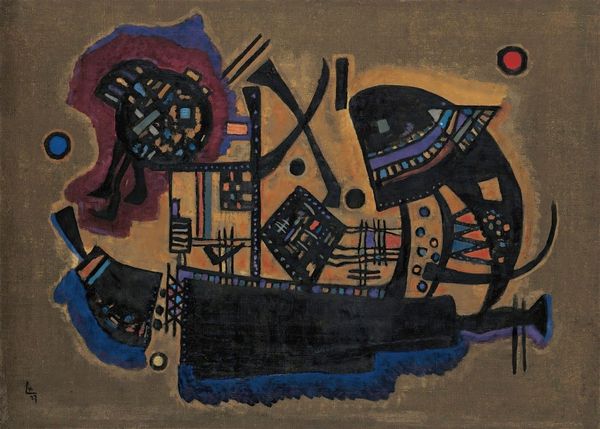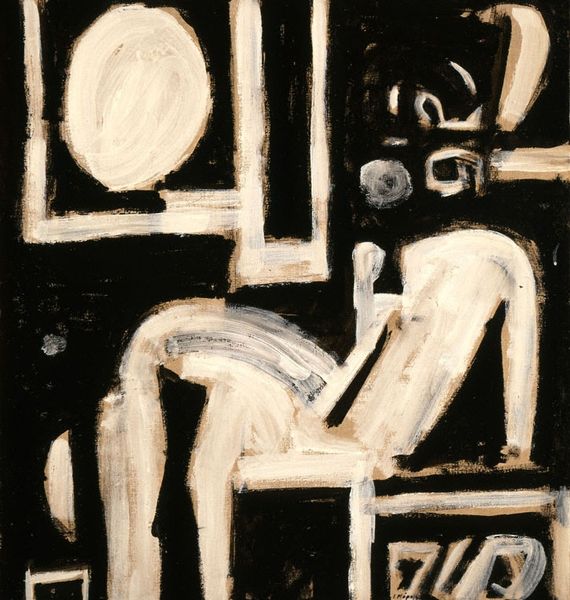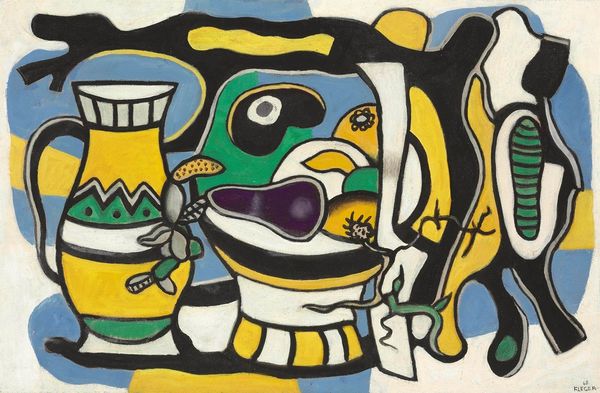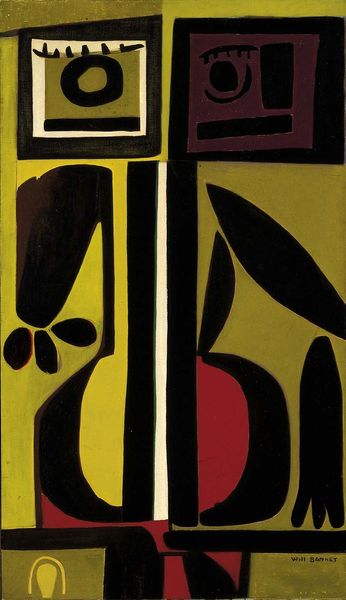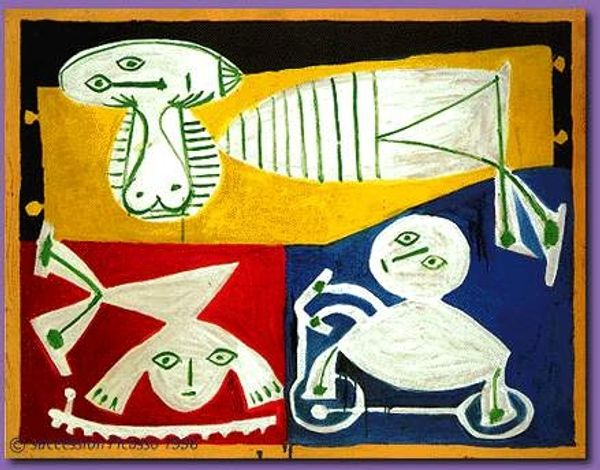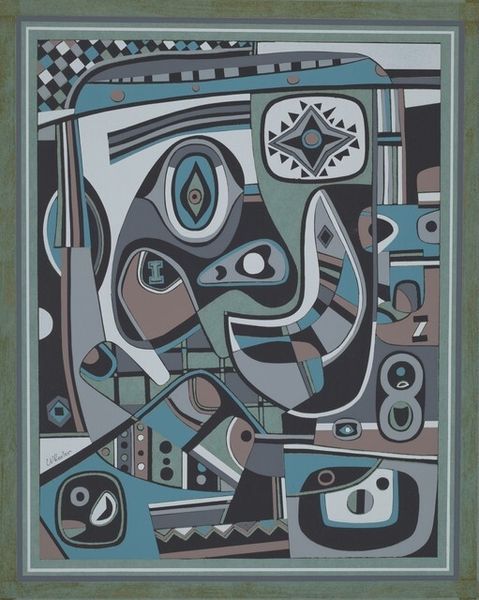
painting, oil-paint
#
portrait
#
cubism
#
painting
#
oil-paint
#
pop art
#
geometric
#
abstraction
#
modernism
Copyright: Public domain US
Curator: Let’s dive into Fernand Léger's 1923 oil on canvas, "The Creation of the World, Drawing of Curtain of Scene." Quite a mouthful, isn’t it? Editor: It is! At first glance, it seems like a study in contrasts—stark black and white geometric forms, reminiscent of tribal masks, or maybe architectural plans? What's your initial take on it? Curator: I see a bold assertion of modernist principles, certainly. Léger, along with many of his contemporaries, was grappling with how to represent a world utterly transformed by industrialization and the trauma of the First World War. Editor: So, abstraction wasn't just about aesthetics but about responding to societal shifts? Curator: Precisely. Think about the socio-political landscape of the 1920s – a time of radical upheaval and questioning of traditional values. Léger uses abstraction to dismantle representational conventions tied to oppressive power structures. Notice the geometric shapes, the lack of traditional perspective... It's a deliberate attempt to forge a new visual language, one that reflects a desire for social change. What kind of “creation” might be suggested here? Editor: That’s fascinating. It almost feels…deconstructive. Are those references to African art intentional, and what's the potential impact there? Curator: The incorporation of African art elements connects this work to a broader dialogue surrounding colonialism and primitivism. Léger, like Picasso, engaged with African art. But how does this engagement reproduce or subvert existing power dynamics? Editor: That's…complicated, and makes me think. Thanks for making that connection! Curator: Art should make us think! It reflects historical moments and future possibilities. This piece embodies those things in its social context.
Comments
No comments
Be the first to comment and join the conversation on the ultimate creative platform.
